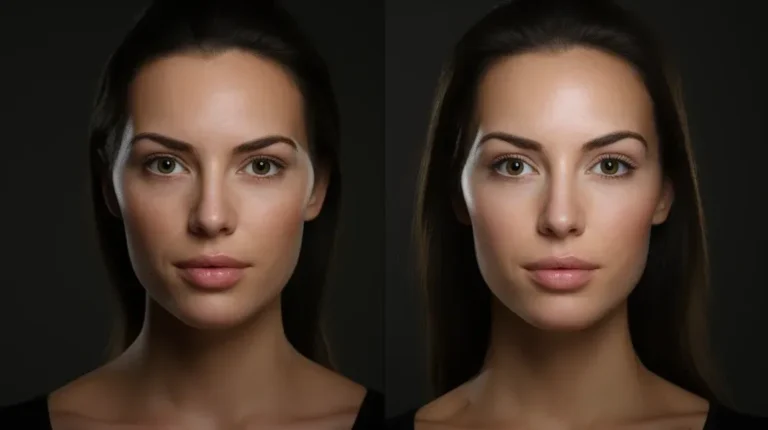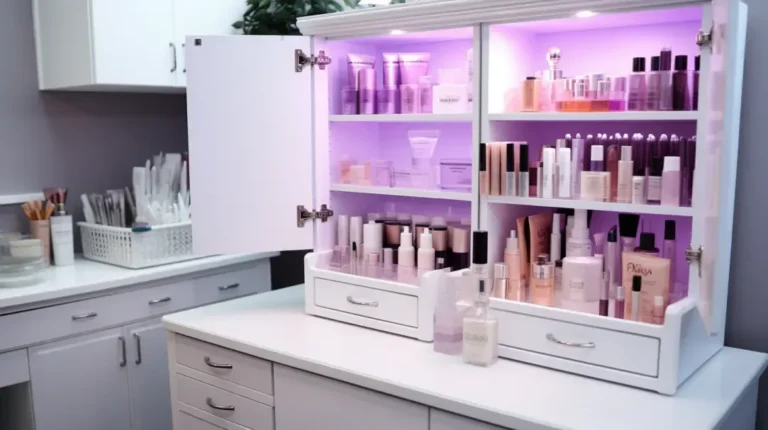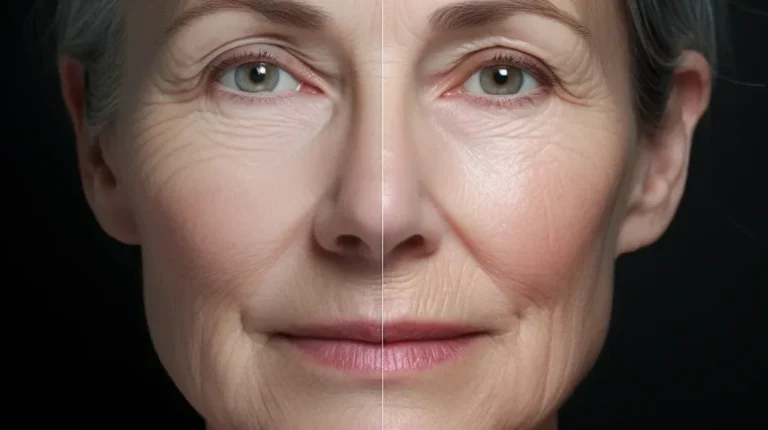How to Take Care of Yourself After Botox
Are you ready to enhance your appearance with Botox injections? Congratulations on taking this exciting step! But remember the essential aftercare that will ensure you achieve the best results. This article will guide you through the necessary steps to care for yourself after Botox.
From skincare tips to managing side effects, we’ve got you covered. Discover how to maintain hydration, protect your skin, and optimize your results.
Let’s dive in and make your Botox care journey a success!
Key Takeaways
- Proper post-botox care is essential for optimal results and minimizing side effects.
- Hydration and sun protection are essential factors in Botox aftercare to maintain skin health and prolong the effects of the treatment.
- Following the recommended timeline for touch-up treatments and attending follow-up appointments is crucial for maintaining the desired results.
- Choosing a qualified practitioner for Botox injections is vital to ensure safe and effective treatment and minimize the risk of complications.
Post Botox Care Essentials
Taking care of yourself after receiving Botox injections is crucial for optimal healing and results. Proper post-botox care can help minimize potential side effects and ensure long-lasting effects. Here are some essential Botox aftercare tips to follow:
- Avoid touching or rubbing the injection sites for at least 24 hours.
- Stay upright for at least four hours after the treatment to allow the Botox to settle correctly.
- Avoid strenuous exercise and activities that can increase blood flow to the face for the first 24 hours.
- Avoid excessive sun exposure and heat, increasing the risk of swelling and bruising.
- Stay hydrated by drinking plenty of water to help flush out toxins and promote optimal healing.
- Follow any additional instructions provided by your healthcare provider.
Proper Hydration and Botox

Maintaining proper hydration is a crucial aspect of post-botox care, offering several benefits for skin health and the healing process:
- Skin Moisture and Elasticity: Hydrated skin retains more moisture, which improves its appearance and elasticity. This is particularly important after Botox injections, as well-hydrated skin can complement the soothing effects of the treatment.
- Detoxification: Adequate hydration helps in flushing out toxins from the body. This can be beneficial after receiving Botox injections, as it may aid in reducing potential side effects.
- Minimizing Bruising and Swelling: Staying hydrated can also help reduce the risk of bruising or swelling at the injection sites. Proper hydration ensures your body functions optimally, aiding quicker recovery and healing.
Hydration Tips for Post-Botox Care
To ensure you’re adequately hydrated after Botox treatments, consider the following tips:
- Water Intake: Aim to drink at least eight 8-ounce glasses of water daily. This amount may vary depending on your needs, activity level, and environmental factors.
- Incorporate Hydrating Foods: Include fruits and vegetables with high water content in your diet. Foods like cucumbers, watermelon, oranges, and strawberries provide hydration and essential nutrients that support skin health.
- Monitor Hydration Levels: Pay attention to signs of dehydration, such as dry mouth, fatigue, or dark urine. These can indicate that you need to increase your fluid intake.
- Limit Dehydrating Beverages: Reduce the intake of beverages that can dehydrate the body, such as alcohol and high-caffeine drinks.
By focusing on proper hydration, you can enhance the healing process and improve the overall results of your Botox treatment. Hydrated skin is healthier, which can contribute to a more prosperous and satisfying outcome from your Botox injections.
Protecting Your Skin From Sun Damage
Protecting your skin from UV damage is essential to optimize the healing process and prolong the aesthetic benefits of your Botox injections. Following a Botox procedure, minimizing direct sunlight exposure for at least 24 hours is imperative, aligning with dermatological best practices.
Integrating a broad-spectrum sunscreen into your daily skincare routine is paramount. Select a sunscreen with a minimum SPF of 30 to ensure comprehensive protection against UVA and UVB rays, which is crucial even on overcast days. Choose products labeled ‘non-comedogenic’ to avert pore blockages and maintain skin health. Use sunscreen on all exposed skin areas, including the face, neck, and hands, to prevent premature aging and skin damage.
For continuous outdoor activities, reapplication of sunscreen every two hours is recommended. This practice not only shields your skin from the detrimental effects of UV radiation but also enhances the longevity and effectiveness of your Botox results. By adopting these straightforward yet vital steps, you’ll actively contribute to your skin’s defense against solar harm while maintaining the rejuvenating outcomes of your Botox treatments.
Managing Bruising and Swelling After Botox
To effectively manage bruising and swelling after receiving Botox injections, it’s essential to implement proper post-treatment care. Here are four tips to help you manage bruising after Botox:
- Apply ice: Applying a cold compress to the treated area can help reduce swelling and minimize bruising. Wrap the ice pack in a clean cloth and gently press it against the bruised area for 10-15 minutes.
- Avoid blood thinners: Certain medications and supplements, such as aspirin and fish oil, can increase the risk of bruising. It’s best to avoid these blood thinners for a few days before and after your Botox treatment.
- Arnica gel: Applying arnica gel to the bruised area can help speed the healing process and reduce discoloration. Follow the instructions on the packaging for the best results.
- Follow-up appointments: Attending your scheduled follow-up appointments with your healthcare provider is essential. They can assess your progress, address concerns, and provide additional guidance on managing bruising and swelling after Botox.
Facial Exercises for Optimal Results
Incorporate facial exercises into your post-treatment routine to optimize your results after Botox. These exercises can help maintain the effectiveness of your Botox injections, improve muscle tone, and enhance the overall appearance of your skin. You can promote collagen production, increase blood flow, and improve skin elasticity by engaging in targeted facial exercises. Here are some simple exercises you can try:
| Exercise | Steps | Benefits |
|---|---|---|
| Brow Lift | Place your index fingers just above your eyebrows and gently lift them upward while simultaneously raising your eyebrows. Hold for a few seconds and repeat 10 times. | Helps lift sagging brows and smooth forehead wrinkles. |
| Cheek Puff | Pucker your lips and fill your cheeks with air. Hold for a few seconds and release. Repeat 10 times. | Strengthens cheek muscles and helps reduce smile lines and sagging cheeks. |
| Jaw Clench | Place your hand on your chin and gently press against it while resisting with your jaw. Hold for a few seconds and release. Repeat 10 times. | Tones the jawline and minimizes the appearance of jowls and double chin. |
Incorporating these facial exercises into your post-botox routine can maximize the effects of your treatment and contribute to a more youthful and radiant appearance. Remember to consult with your healthcare provider before starting any new exercise regimen.
Follow-Up Appointments and Touch-Up Treatments
After your initial Botox treatment, scheduling follow-up appointments and considering touch-up treatments is essential for maintaining the best results. Here’s what you need to know:
- Consultation with Healthcare Provider: Your specialist will provide tailored advice on the frequency of touch-ups. They’ll consider factors like your skin type, treated area, and desired outcomes.
- Monitoring Treatment Longevity: Keep track of how long the effects of each Botox session last. This will guide you in scheduling future appointments at appropriate intervals.
- Consistent Treatment Schedule: Regular touch-ups, usually every 3 to 6 months, can help maintain a consistent look. Consistency is crucial for ongoing effectiveness.
- Open Communication: If you notice any changes or have concerns post-treatment, promptly discuss them with your provider. They can make necessary adjustments for optimal results.
The Role of Follow-Up Appointments in Botox Care
Follow-up appointments are an integral part of your Botox treatment journey:
- Assessment and Adjustment: These sessions allow your provider to assess the treatment’s effectiveness and make any needed adjustments. They ensure that the results align with your aesthetic goals.
- Addressing Concerns and Questions: Use these appointments to voice questions or concerns. Your provider can offer insights, reassurances, or modifications to your treatment plan.
- Scheduling Touch-Up Treatments: Based on your initial response to Botox, your provider may suggest touch-up treatments to enhance or prolong the desired effects.
- Detecting and Managing Complications: Regular check-ups help in the early detection of any potential complications, ensuring timely and appropriate intervention.
Long-Term Botox Maintenance
For those who opt for ongoing Botox treatments:
- Personalized Maintenance Plan: Work with your provider to develop a long-term plan tailored to your needs and lifestyle.
- Balancing Natural Appearance: Regular treatments should aim for a natural, refreshed appearance, avoiding an overdone look.
- Adapting to Changes: Your skin and facial structure change as you age. Your Botox regimen may need adjustments to adapt to these changes.
Regular follow-up appointments and touch-up treatments play a crucial role in achieving and maintaining the desired effects of Botox. They ensure your treatment remains effective, safe, and aligned with your evolving aesthetic goals.
Long-Term Effects and Maintenance of Botox
To extend the effects of Botox and maintain its benefits over time, consider the following best practices:
- Consistent Aftercare: Post-treatment care is vital. Avoid strenuous activities and excessive heat for the first 24 hours. Gentle facial cleansing and avoiding harsh skincare treatments right after the procedure can help maintain the integrity of the treatment area.
- Sun Protection: UV exposure can accelerate skin aging and may diminish the lasting effects of Botox. Use a broad-spectrum sunscreen and protective clothing to shield your skin from the sun.
- Regular Skincare Routine: Implement a consistent skincare routine with hydration and moisturization. Products rich in antioxidants and peptides can support skin health and enhance the appearance of Botox-treated areas.
- Healthy Lifestyle Choices: A healthy lifestyle, including a balanced diet and adequate hydration, can positively impact skin health and potentially prolong the effects of Botox.
Understanding the Duration of Botox Effects
The longevity of Botox results varies among individuals, but typically, the effects last about 3 to 4 months. Several factors can influence this duration:
- Dosage and Technique: The amount of Botox used and the precision of the injection technique play significant roles in how long the effects last.
- Individual Metabolism: Your body’s metabolism rate can affect how quickly the Botox is processed and its duration of effect.
- Facial Muscle Activity: Individuals with more active facial expressions may notice that the effects of Botox wear off more quickly.
Planning for Touch-Up Treatments
To maintain the aesthetic results achieved with Botox, consider these factors:
- Regular Consultations: Schedule follow-up appointments with your provider to assess the need for touch-up treatments.
- Timing of Touch-Ups: Based on your initial response to Botox, your provider can recommend a schedule for touch-ups every 3 to 6 months.
- Personalized Treatment Plan: Work with your provider to create a tailored plan that aligns with your aesthetic goals and maintains the natural look of your facial expressions.
By adhering to these guidelines, you can effectively prolong the benefits of your Botox treatment, ensuring lasting satisfaction with your results. Regular consultations with your healthcare provider will also ensure your treatment plan is continuously optimized for your evolving needs.
Avoiding Alcohol and Exercise Restrictions
It would help if you avoided alcohol and exercise restrictions after receiving Botox injections. Here are some reasons why:
- Alcohol consumption and Botox: Alcohol can increase the risk of bruising and swelling at the injection site. It can also interfere with the healing process and affect the longevity of your Botox results.
- Exercise restrictions: Strenuous exercise can increase blood flow and raise your body temperature, leading to increased swelling and bruising. It’s recommended to avoid activities like weightlifting, running, and hot yoga for at least 24 hours after your Botox treatment.
- Rest: Taking it easy after your Botox injections allows the product to settle correctly and reduces the risk of complications. It’s an excellent opportunity to pamper yourself and give your body time to heal.
- Follow your doctor’s instructions: Everyone is unique, and your doctor may have specific recommendations based on your medical history and the treatment you received. It’s essential to consult with your doctor and follow their instructions for the best results.
Now that you understand the importance of avoiding alcohol and exercise restrictions after Botox let’s discuss the next step: cleansing your face after Botox.
Cleansing Your Face After Botox
After receiving Botox injections, cleaning your face using a gentle cleanser is vital for proper skin care. Cleansing your face after Botox helps remove dirt, oil, and impurities while keeping your skin hydrated and fresh. Choosing a cleanser that is suitable for your skin type and does not contain harsh ingredients that could irritate your skin is crucial.
Here is a table summarizing the importance of cleansing your face after Botox:
| Benefits of Cleansing Your Face After Botox |
|---|
| Removes dirt, oil, and impurities |
| Helps maintain skin hydration |
| Keeps skin fresh and clean |
| Prevents clogged pores |
| Promotes overall skin health |
Cleansing your face after Botox is an essential step in your skincare routine. By incorporating this simple step, you can help maintain the results of your Botox treatment while keeping your skin healthy and glowing.
Makeup Tips for Post-Botox Care
After cleansing your face following Botox injections, it’s vital to consider makeup tips for post-Botox care. Here are four essential tips to keep in mind:
- Choose lightweight and non-comedogenic products: Opt for oil-free and water-based foundations, concealers, and powders to allow your skin to breathe and reduce the risk of clogged pores.
- Be gentle during application: Avoid applying excessive pressure or tugging on your skin while applying makeup. Use soft brushes or your fingertips to blend products onto your face gently.
- Please wait for the recommended time: It’s best to wait at least 24 hours after Botox injections before applying makeup. This allows the botulinum toxin to settle into the targeted muscles without interference.
- Focus on enhancing your natural beauty: Use makeup to highlight your best features and create a balanced, symmetrical appearance. Remember, Botox aims to enhance natural beauty, so embrace your unique features.
By following these makeup tips, you can ensure optimal results and maintain the longevity of your Botox treatment.
Now, let’s dive into recognizing signs of Botox complications.
Recognizing Signs of Botox Complications
Have you ever wondered what signs to look out for in case of Botox complications? While Botox injections are generally safe and well-tolerated, it’s essential to be aware of the potential risks.
Some common signs of Botox complications include:
- Severe bruising
- Excessive swelling
- Persistent pain or discomfort
- Asymmetrical results
If you experience any of these symptoms, contacting your healthcare provider immediately is crucial. They’ll be able to assess the situation and provide appropriate guidance and treatment if necessary.
Recognizing these signs early can help prevent further complications and ensure your safety and well-being.
Now that you know what to watch out for, let’s move on to the next section about stress management and self-care after Botox.
Stress Management and Self-Care After Botox
To maintain optimal results and promote overall well-being, it’s essential to prioritize stress management and self-care following your Botox treatment. Here are four essential practices to incorporate into your post-botox routine:
- Relaxation Techniques: Engage in stress-reducing activities such as deep breathing exercises, meditation, or yoga. These practices can help calm your mind and alleviate tension, enhancing the effectiveness of your Botox treatment.
- Healthy Lifestyle: Ensure you get enough sleep, eat a balanced diet, and stay hydrated. Adequate rest and proper nutrition support your body’s natural healing process and produce long-lasting results.
- Self-Care Rituals: Pamper yourself with facial massages or gentle skincare routines. These practices can enhance blood circulation, promote lymphatic drainage, and maintain the health of your skin.
- Avoiding Stress Triggers: Identify and avoid situations or activities that cause stress. Whether it’s a hectic work schedule or toxic relationships, minimizing stress triggers can help you maintain a relaxed state and preserve the effects of your Botox treatment.
Frequently Asked Questions
Can I Use Any Makeup After Getting Botox?
You can use makeup after getting Botox, but waiting a few hours is essential to let the injections settle. Choose non-comedogenic products and gently apply and remove makeup to avoid irritation.
How Long Should I Wait Before Exercising After Receiving Botox Injections?
Wait at least 24 to 48 hours before exercising after getting Botox. This allows the toxin to settle in and reduces the risk of migration. Exercise increases blood flow and can affect the results.
Is It Normal to Experience Bruising and Swelling After Botox?
It is expected to experience bruising and swelling after Botox. These side effects should subside within a few days. Apply ice to reduce swelling and avoid blood-thinning medications to minimize bruising.
What Are the Potential Long-Term Effects of Botox?
The potential long-term effects of Botox vary among individuals. While it is generally safe and effective, possible risks include muscle weakness, drooping eyelids, and allergic reactions. Consult with your provider for personalized information.
How Can I Recognize Signs of Complications After Getting Botox?
Recognizing signs of complications after getting Botox is crucial. Look out for excessive swelling, severe pain, difficulty breathing, or vision changes. If you experience these, seek immediate medical attention to ensure your safety.
Conclusion
Congratulations on taking a step towards getting Botox injections!
Now that you know how to care for yourself after the procedure, you can ensure optimal results and a smooth recovery process. You can maintain a rejuvenated appearance by following the post-botox care essentials, such as proper hydration, sun protection, and facial exercises.
Remember to schedule follow-up appointments and be mindful of any potential complications.
Take care of yourself and enjoy the benefits of your Botox journey!







